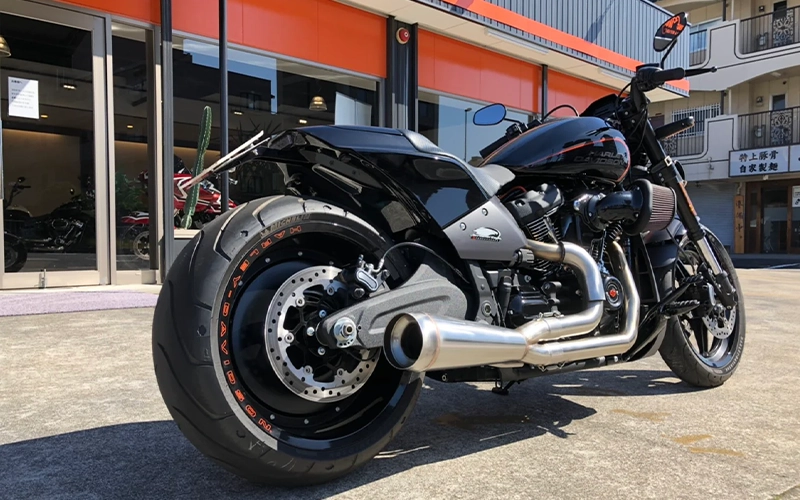There’s nothing quite like the freedom of a summer ride. The roads are dry, the skies are clear, and the warm air makes every journey feel like an adventure. But with the heat of the sun beating down, your motorcycle engine is facing an extra challenge—overheating.
If you’ve ever felt your bike getting hotter than usual, noticed the temperature gauge creeping up, or experienced a sudden drop in power, you know just how frustrating and risky overheating can be. A motorcycle that runs too hot isn’t just uncomfortable—it can cause serious engine damage, leaving you stranded in the middle of nowhere with a repair bill you never saw coming.
So, how do you prevent overheating from ruining your summer rides? And if your engine does start running too hot, what should you do? This guide will walk you through why motorcycles overheat, how to prevent it, and what steps to take if your engine starts struggling in high temperatures.
Why Do Motorcycle Engines Overheat in the Summer?
Motorcycles generate a lot of heat, even under normal conditions. During summer, the combination of high ambient temperatures and engine friction can push your bike past its cooling limits. This is especially true for air-cooled motorcycles, which rely on airflow rather than a radiator to regulate heat.
Some of the most common causes of overheating include:
- Riding in extreme heat – If it’s 100°F (38°C) outside, your engine has to work even harder to stay cool.
- Sitting in traffic – Stop-and-go movement limits airflow, especially for air-cooled bikes.
- Low coolant levels – If your bike is liquid-cooled, a lack of coolant can lead to overheating fast.
- Dirty or old engine oil – Oil isn’t just for lubrication; it also helps cool the engine. Old or low oil increases internal friction, generating excess heat.
- Clogged radiators or cooling fins – Dirt, bugs, and debris block airflow, reducing your engine’s ability to cool itself.
- Riding too aggressively – Revving high and riding hard in hot weather generates more heat than usual.
Understanding what’s pushing your engine beyond its limits is the first step in making sure it doesn’t happen to you.
How to Prevent Your Motorcycle from Overheating
1. Keep Your Engine Well-Lubricated
Your engine oil plays a crucial role in keeping your bike cool by reducing internal friction and carrying away excess heat. If your oil is old, dirty, or running low, overheating becomes a serious risk.
- Check your oil level before every ride—especially in hot weather.
- If your oil looks dark, sludgy, or has debris in it, it’s time for a change.
- Use the right type of oil for your motorcycle. Some high-performance bikes need synthetic oil to handle extreme temperatures.
Fresh oil doesn’t just keep your engine running smoothly—it helps prevent excessive heat buildup and ensures a longer lifespan for your bike.
🔗 Get high-quality motorcycle oils and lubricants here.
2. Maintain Your Coolant System (For Liquid-Cooled Bikes)
If your motorcycle is liquid-cooled, the coolant system is your best defense against overheating. But coolant breaks down over time, and if you’re running low or using old coolant, your engine will start running hot.
- Check your coolant levels regularly and top them off if necessary.
- If your coolant is more than two years old, replace it.
- Look for signs of leaks—coolant should never be dripping from your bike.
Using the right type of coolant for your motorcycle ensures optimal heat dissipation. Never mix different coolants unless they’re compatible—this can cause chemical reactions that reduce cooling efficiency.
3. Clean the Radiator and Cooling Fins
For both liquid-cooled and air-cooled motorcycles, a clogged radiator or cooling fins can cause overheating.
- Inspect the radiator for dirt, dead bugs, or debris. A blocked radiator can’t dissipate heat effectively.
- Use a soft brush and compressed air to clean the cooling fins without damaging them.
- If your bike is air-cooled, make sure the fins aren’t covered in grime, as they rely on airflow to regulate temperature.
Keeping these components clean will ensure that air can flow freely, allowing your bike to cool down efficiently.
4. Avoid Prolonged Idling and Stop-and-Go Traffic
Sitting in traffic on a scorching summer day is one of the fastest ways to overheat your engine. Since motorcycles rely on airflow to stay cool, idling for too long with minimal movement causes heat to build up quickly.
If you’re stuck in slow-moving traffic:
- Turn off your engine at long stops to prevent unnecessary heat buildup.
- Lane-split where legal—it keeps air moving around your engine.
- Plan your rides for early mornings or late evenings when temperatures are cooler.
5. Ride Smart: Adjust Your Riding Style
Riding aggressively in hot weather pushes your engine harder, generating more heat than usual. To prevent unnecessary strain on your bike:
- Use higher gears when possible to reduce engine load.
- Avoid sudden acceleration and excessive revving.
- Take short breaks if you’re on a long ride—your bike needs time to cool down, too.
Your riding habits directly affect your engine’s temperature, so being mindful of how you ride can go a long way in preventing overheating.
What to Do If Your Motorcycle Starts Overheating
Even with the best maintenance, overheating can still happen. If you notice warning signs—the temperature gauge climbing, loss of power, or excessive heat coming off the engine—take immediate action.
- Find a safe place to pull over—continuing to ride can cause permanent engine damage.
- Turn off the engine and let it cool down for at least 20–30 minutes.
- Check coolant and oil levels—low levels could be the cause of the problem.
- Inspect for leaks or blockages—a coolant leak or clogged radiator might be the culprit.
- Restart the bike once it has fully cooled. If it still overheats, don’t risk it—get your bike checked by a mechanic.
Never pour cold water on a hot engine—this can cause metal parts to contract too quickly, leading to cracks or warping.
Final Thoughts: Ride Smart, Stay Cool
Riding in the summer heat is one of the best experiences on a motorcycle, but if your engine starts overheating, it can turn a perfect ride into a stressful situation.
By keeping up with regular maintenance, using high-quality engine oil, checking coolant levels, cleaning cooling systems, and riding smart, you can keep your bike running cool and powerful, even in extreme temperatures.
Before setting off on those long summer road trips, make sure your motorcycle is heat-ready—because nothing should stand between you and the open road.
🔗 Need top-quality motorcycle parts and accessories? Check them out here.
Summer is waiting. Make sure your motorcycle is ready for the ride.










